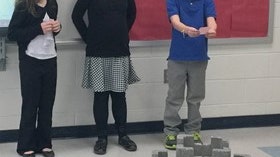Homepage
•
Learning Library
•
Blog
•
Community PBL lessons allow students to make a difference
Expand breadcrumbs
Expand breadcrumbs
- Learning Library
- Blog
- Community PBL lessons allow students to make a difference
- Homepage
- •
- Learning Library
- •
- Blog
- •
- Community PBL lessons allow students to make a difference
Community PBL lessons allow students to make a difference
By Melissa Follin and Christina Troxell
September 18, 2019








